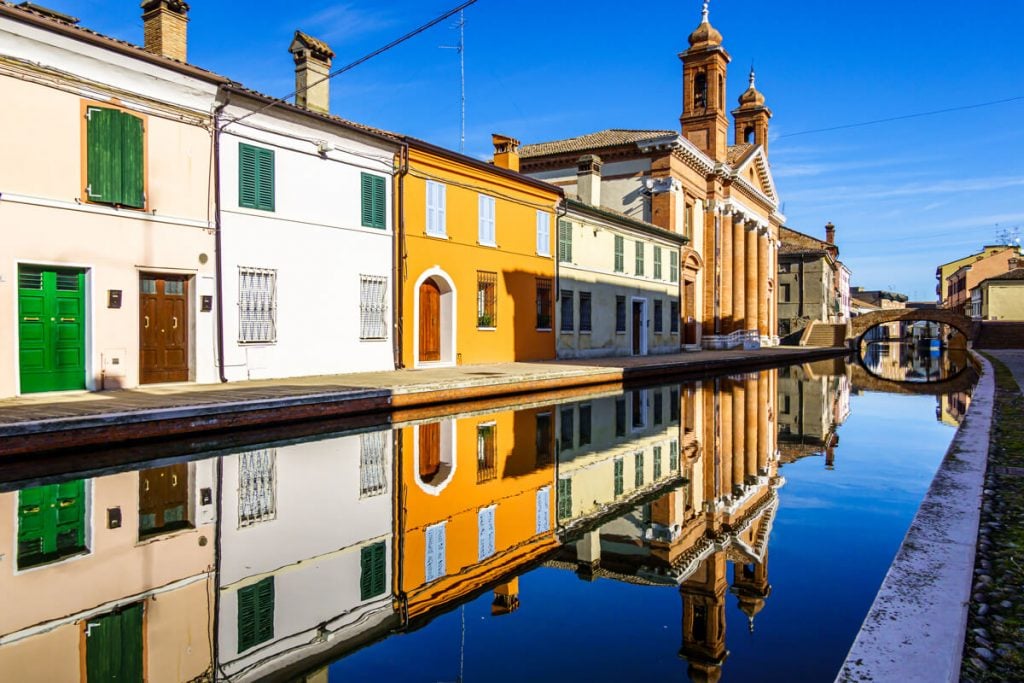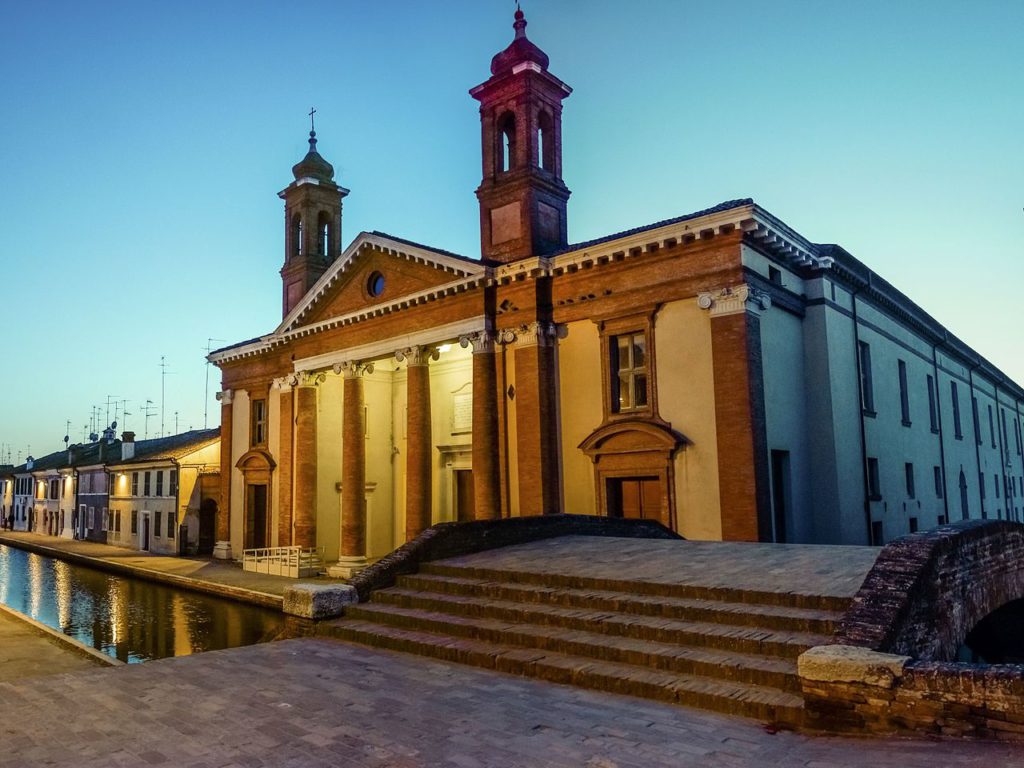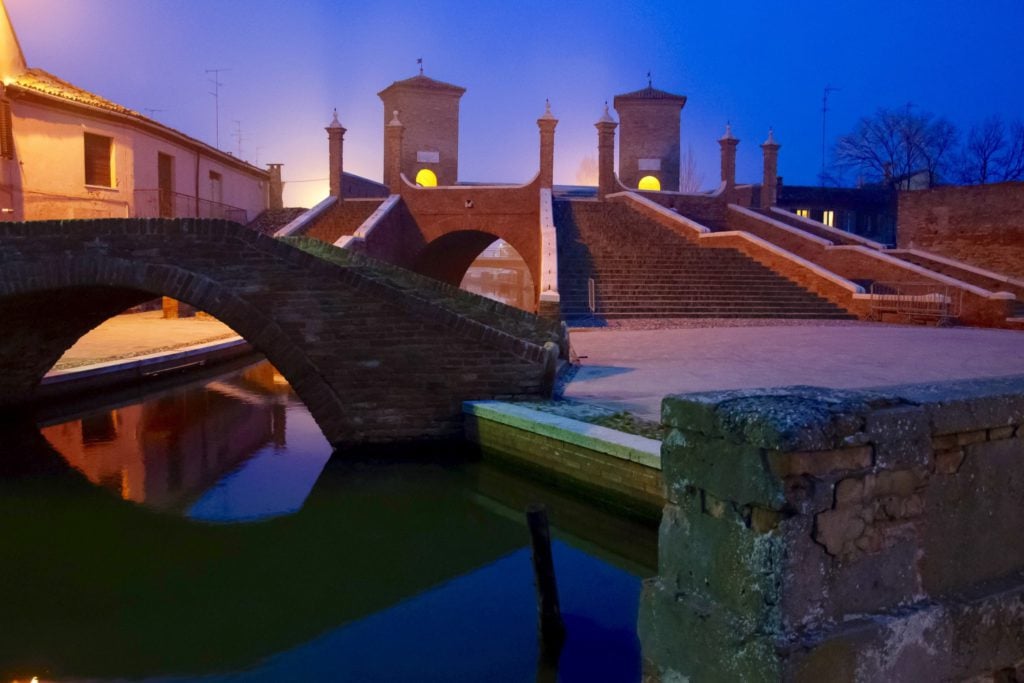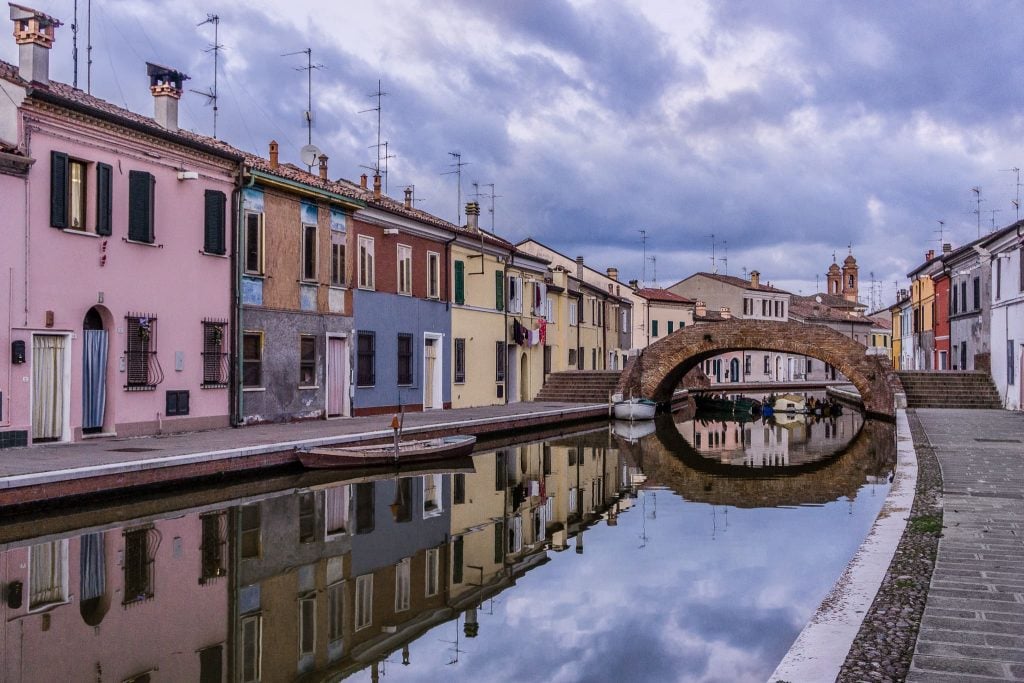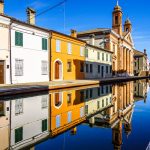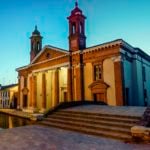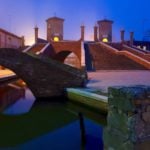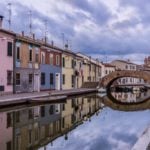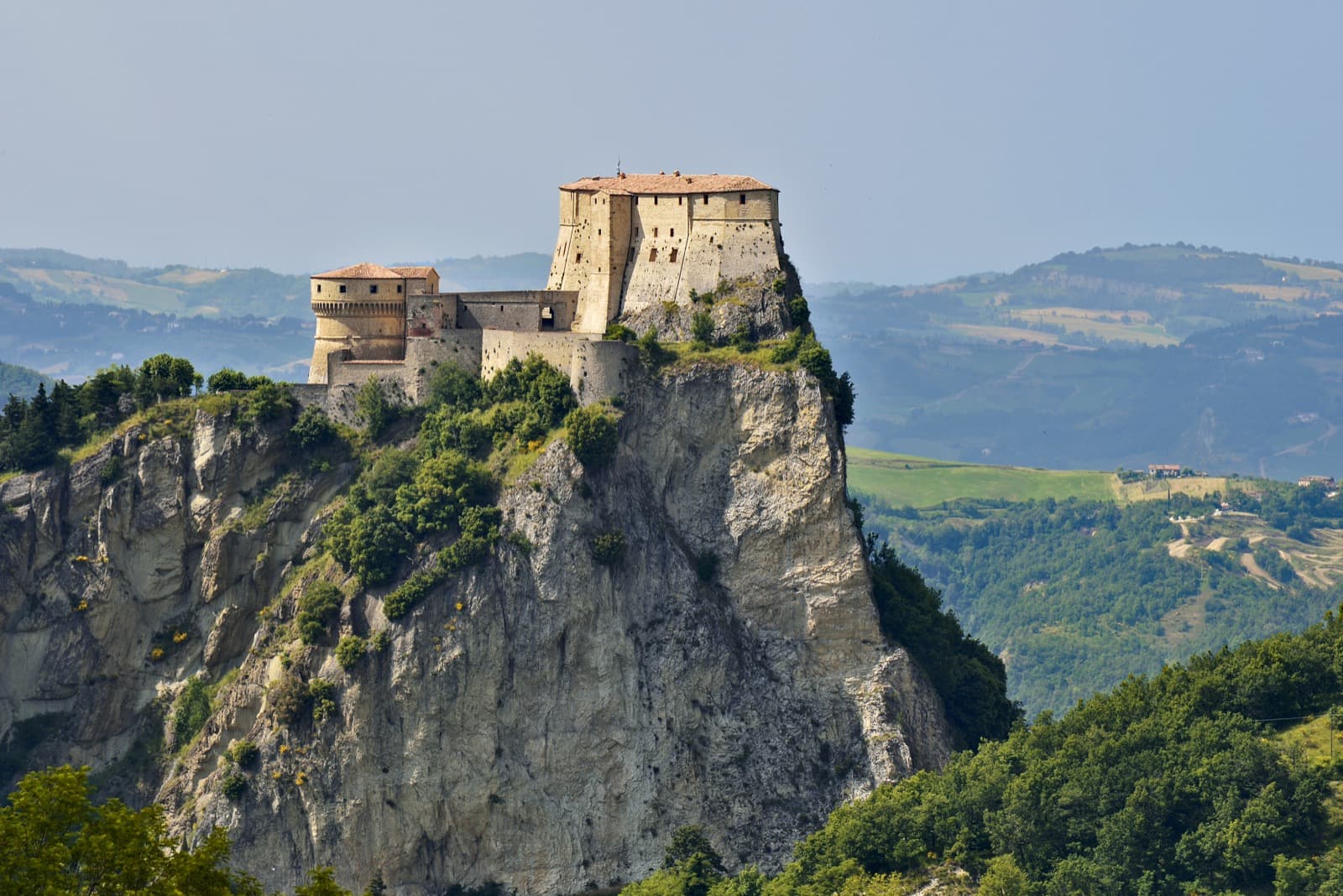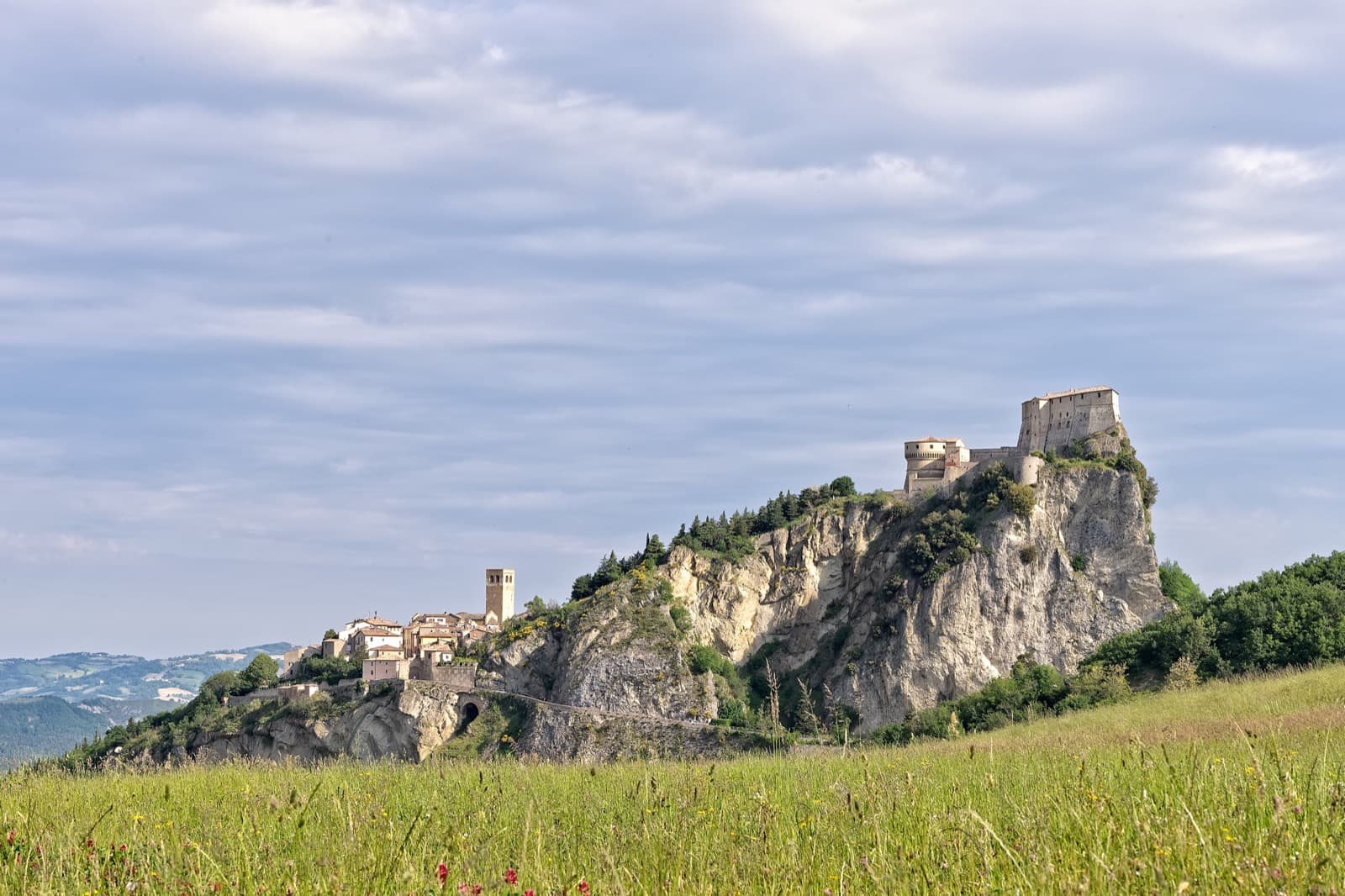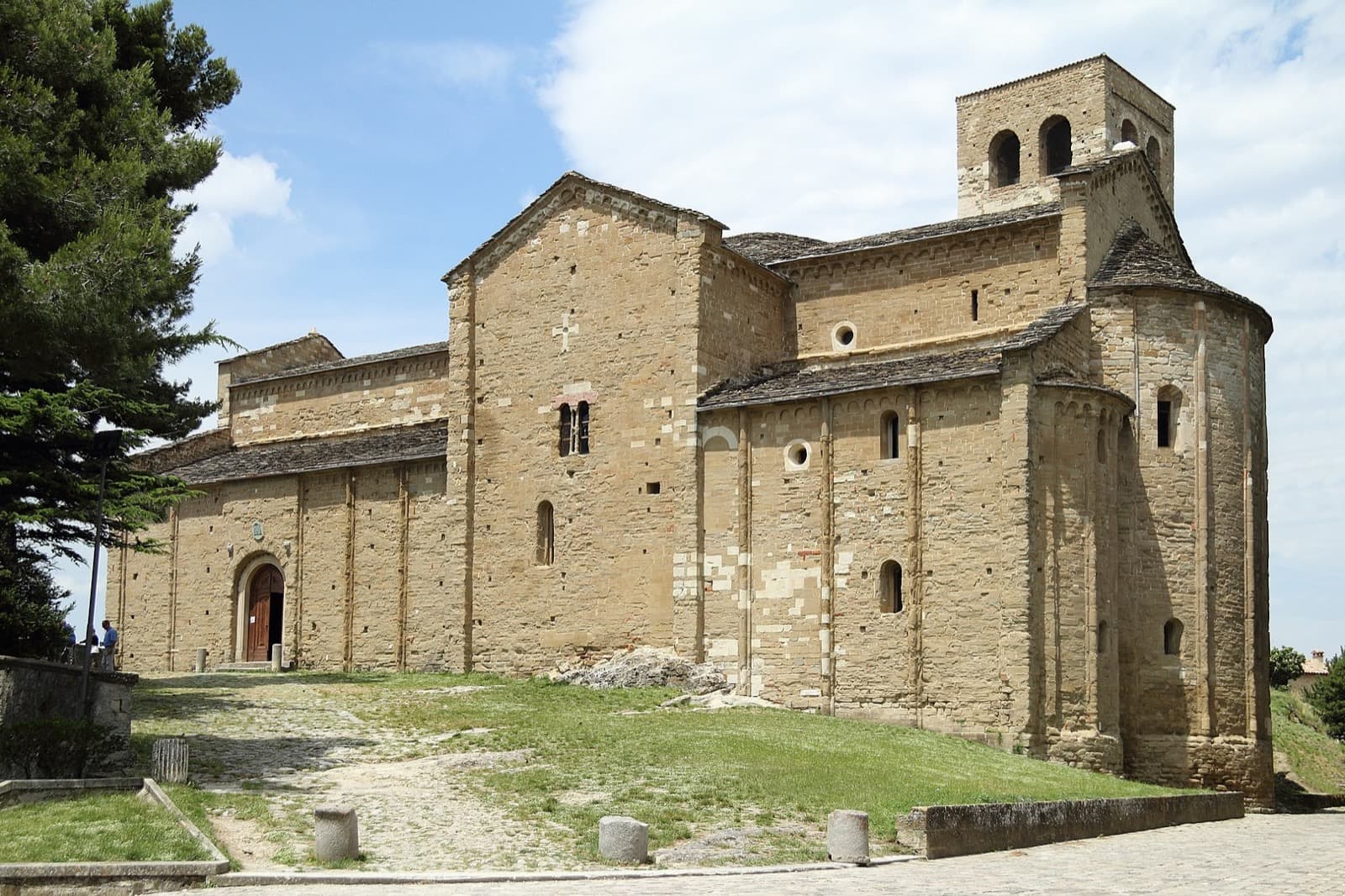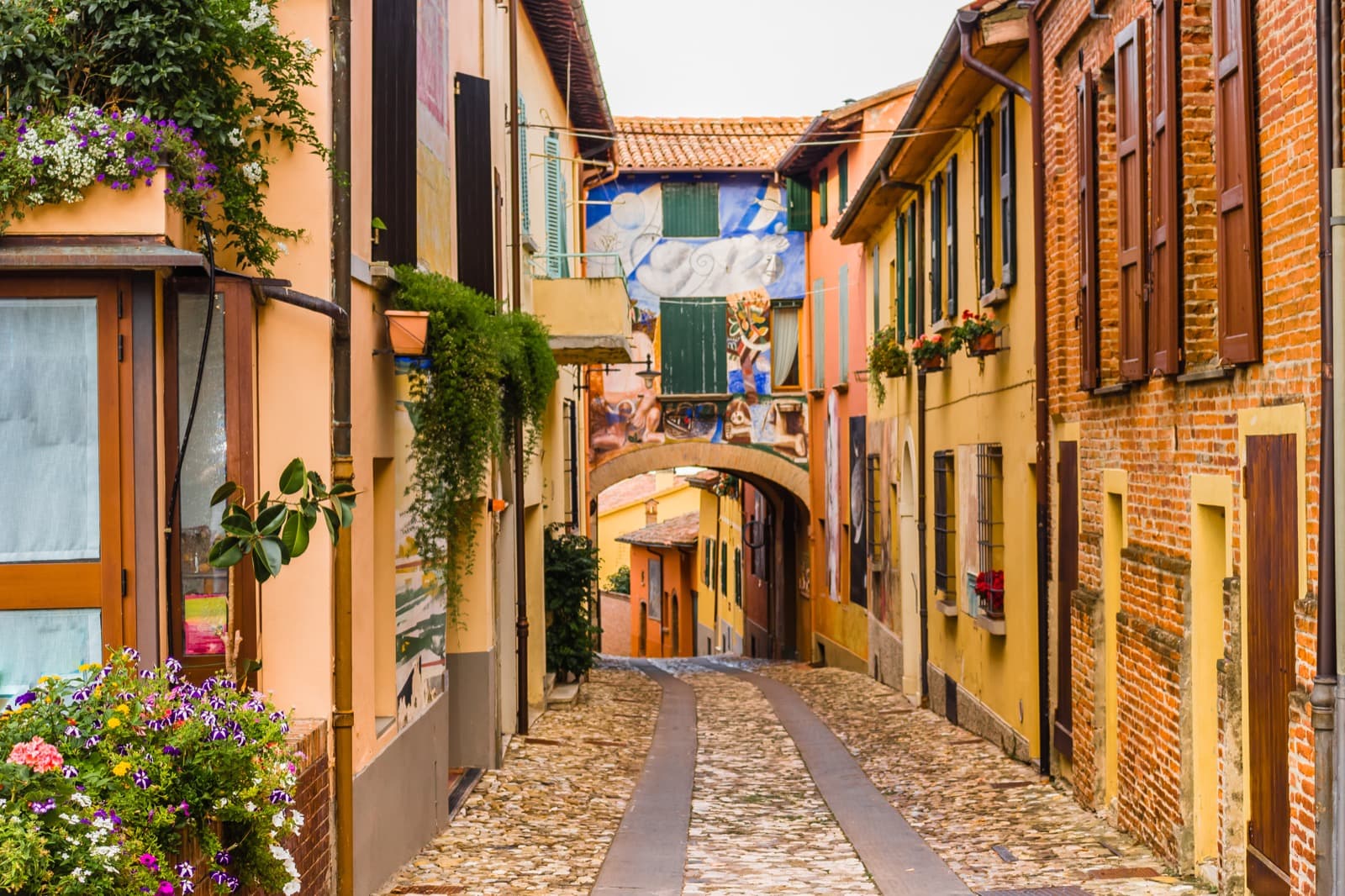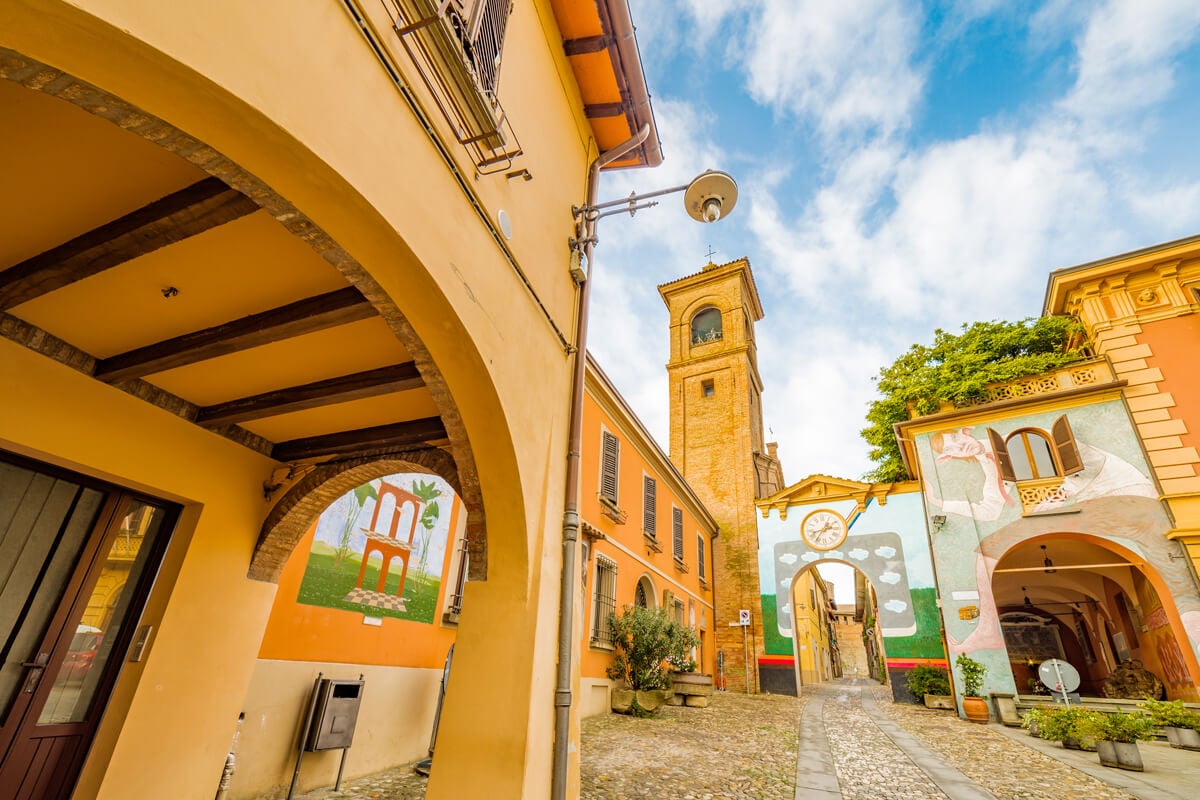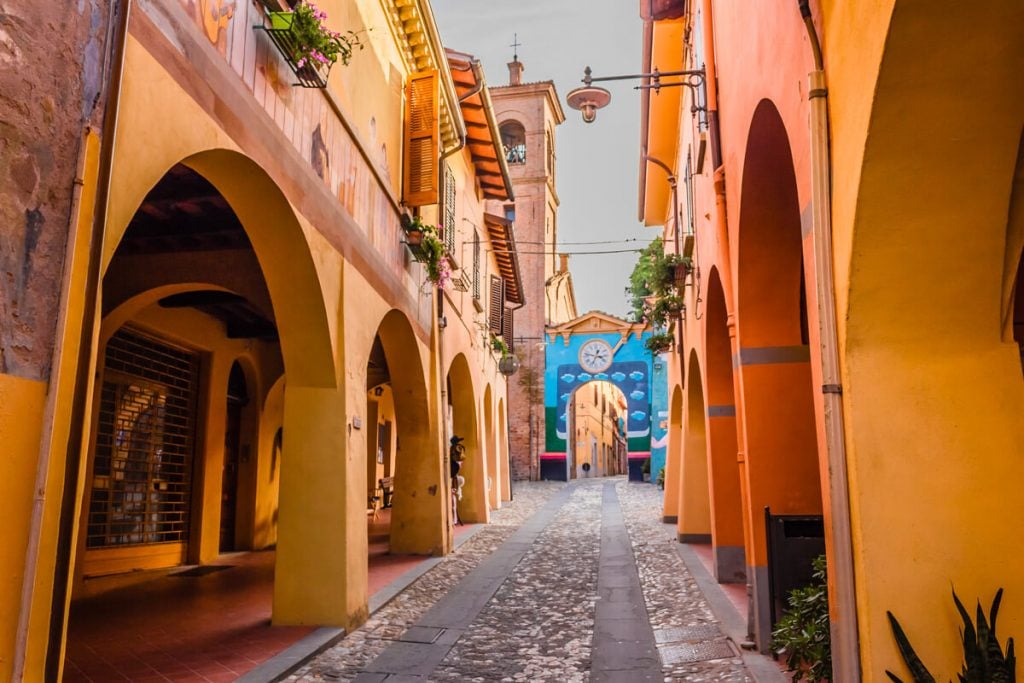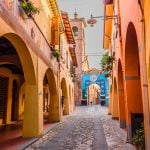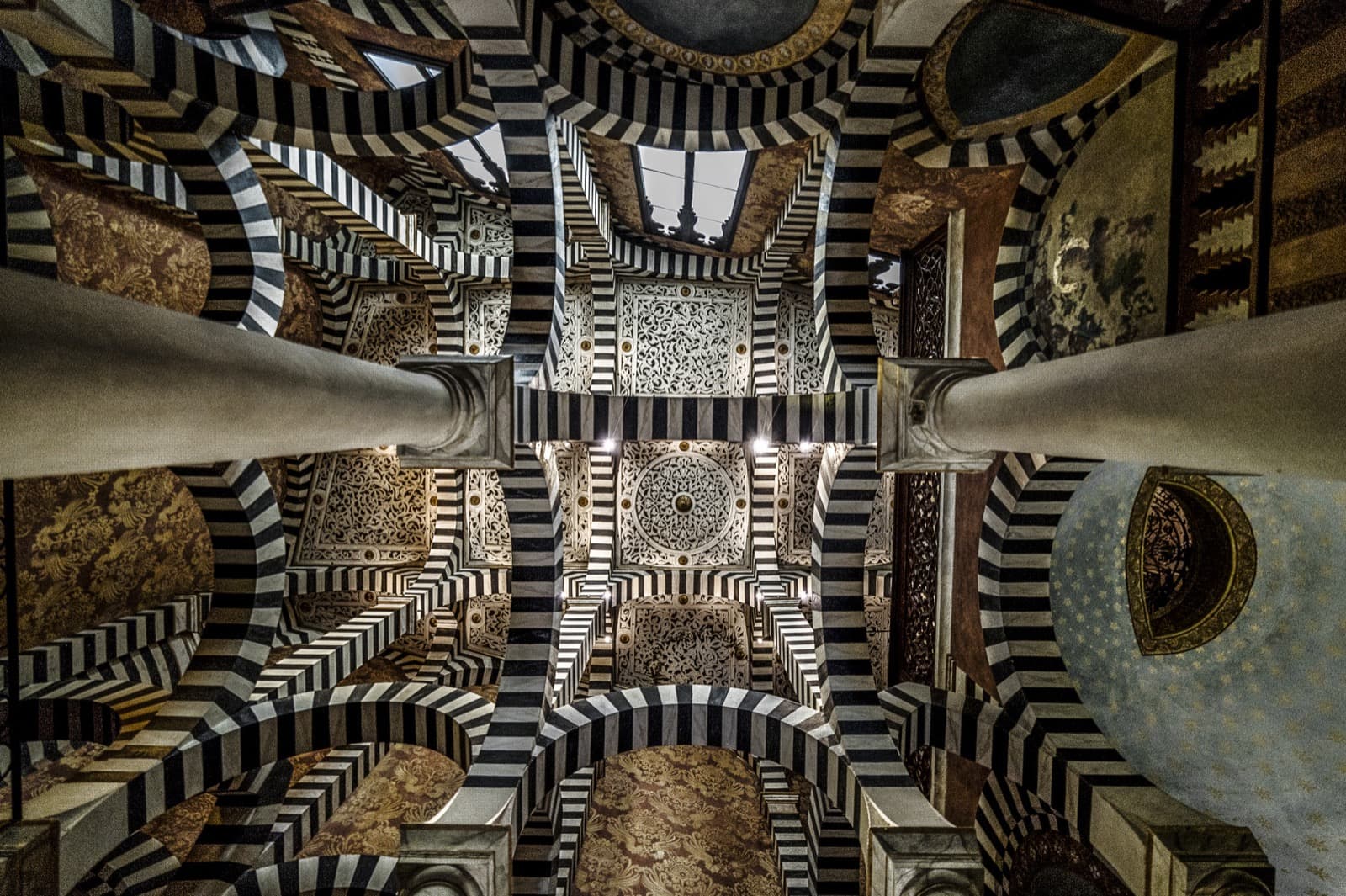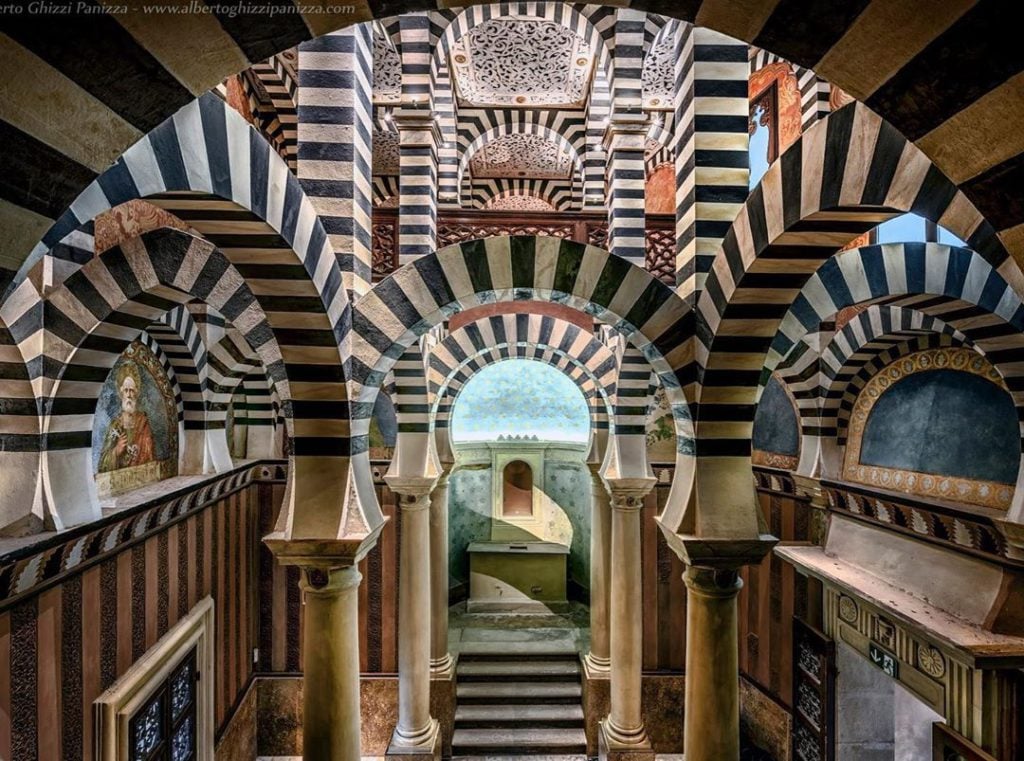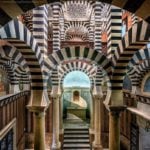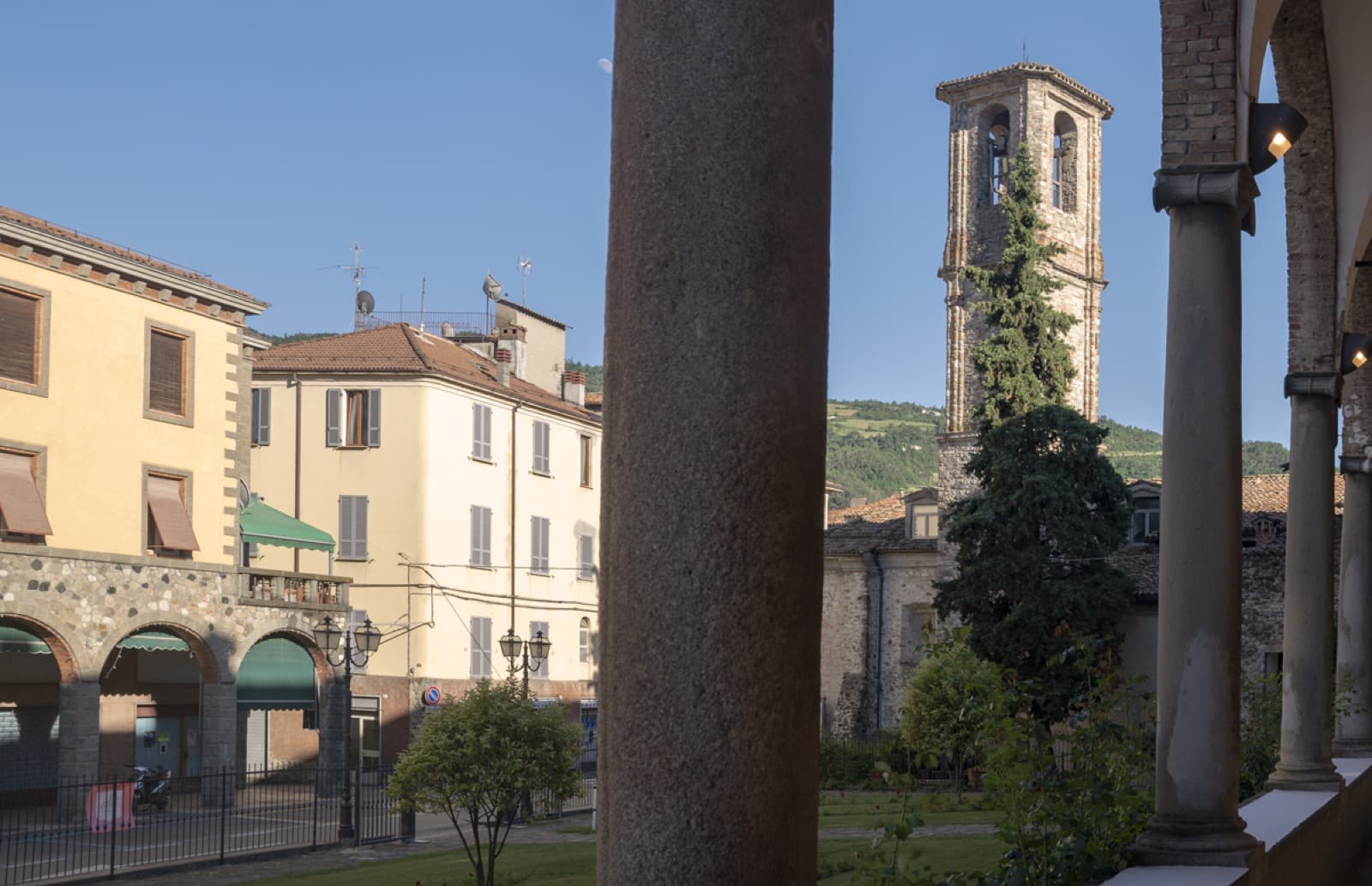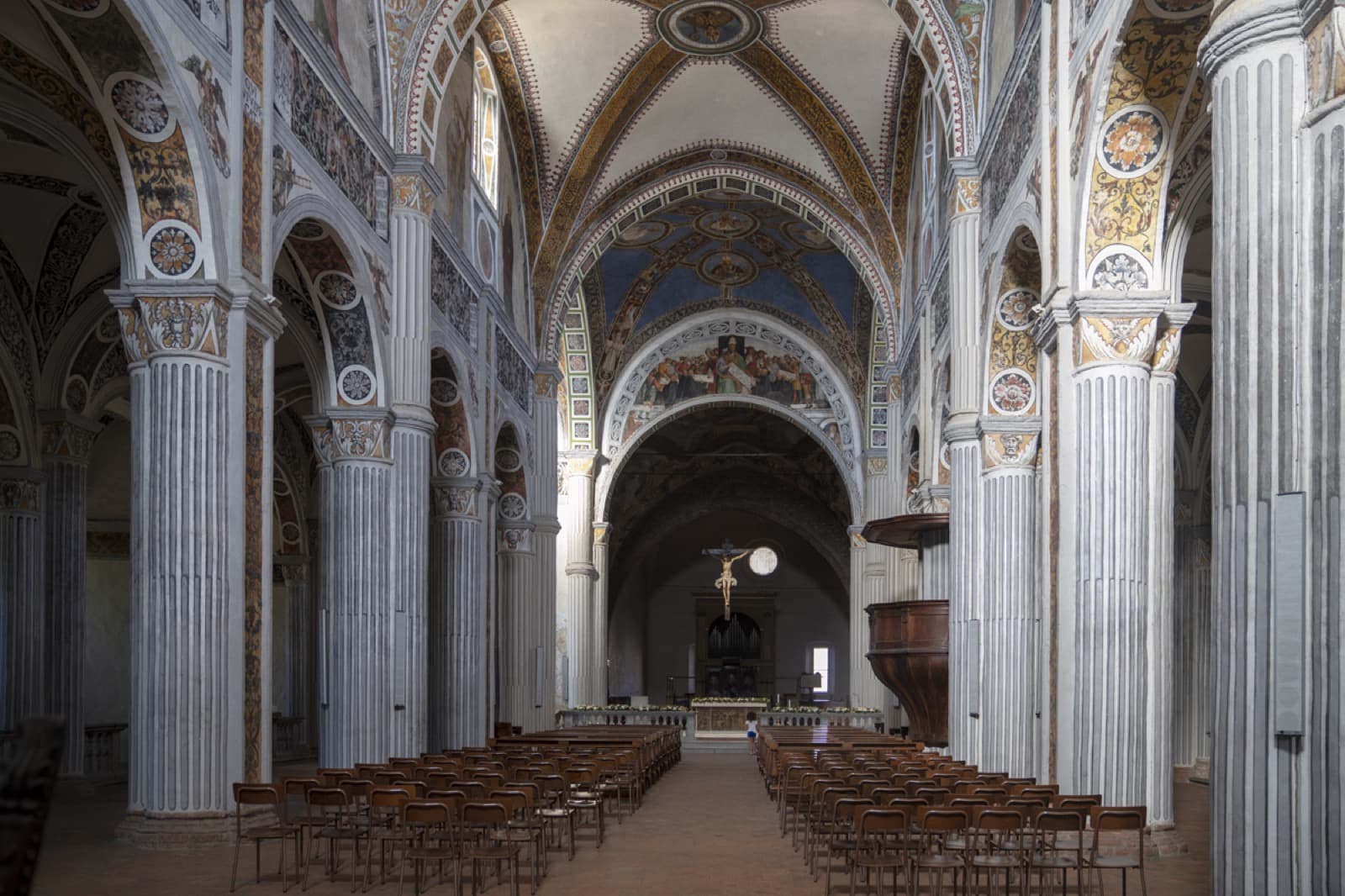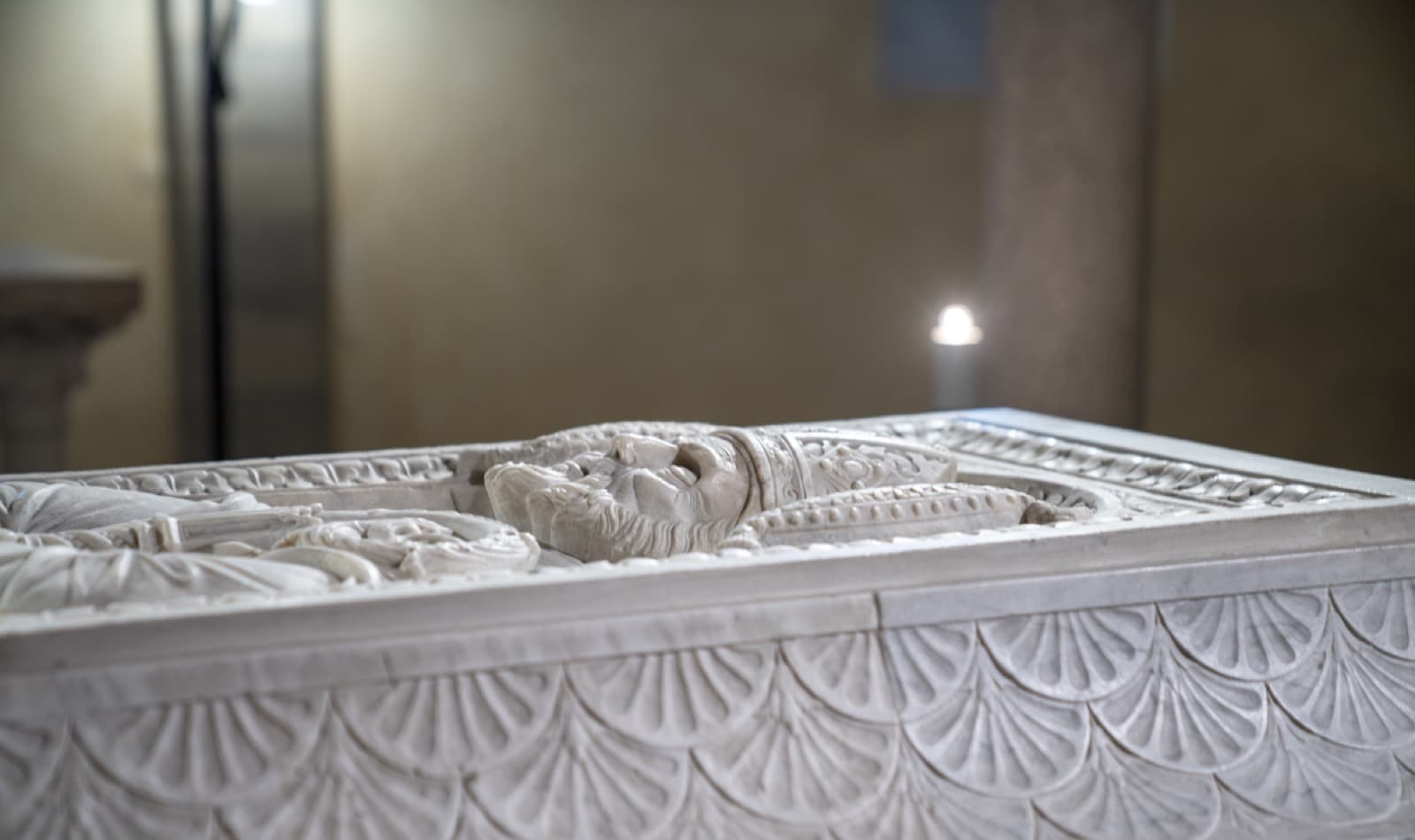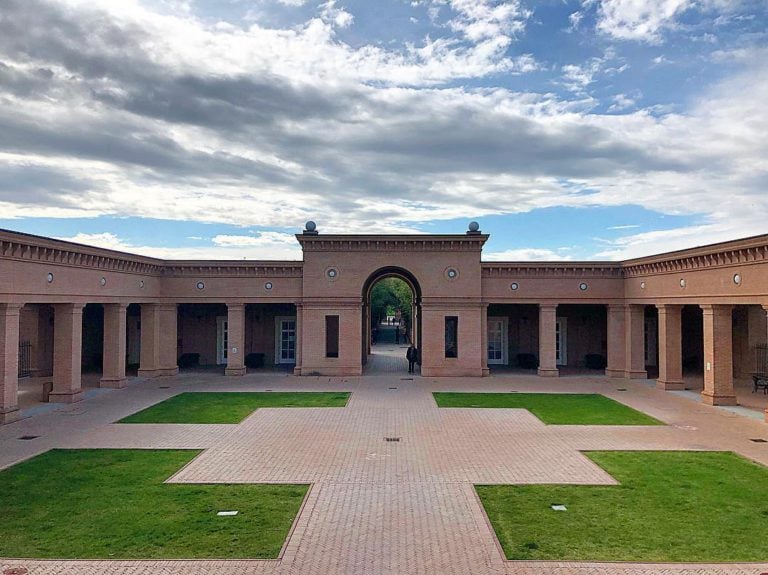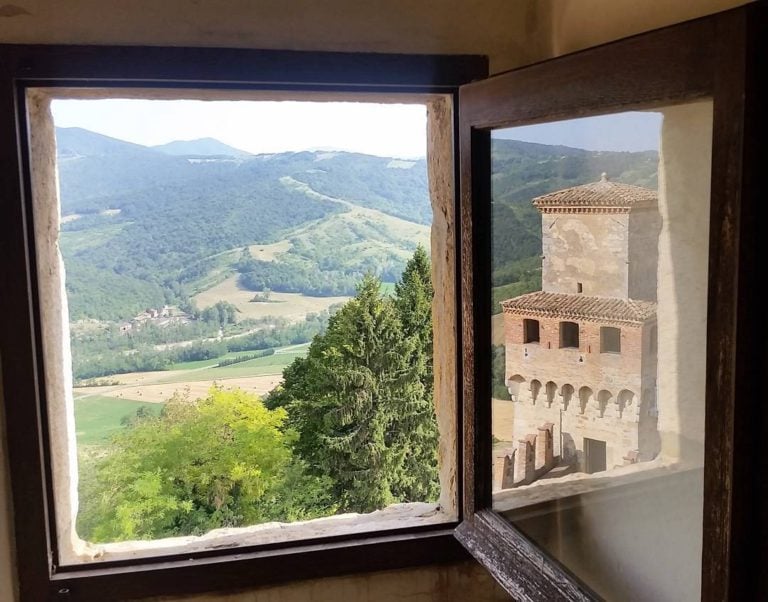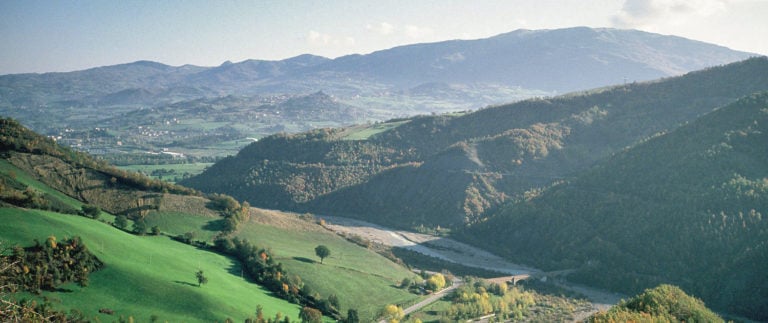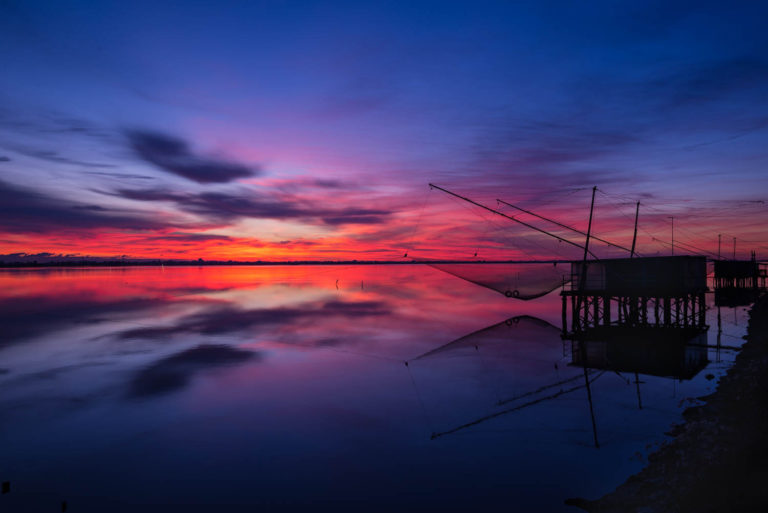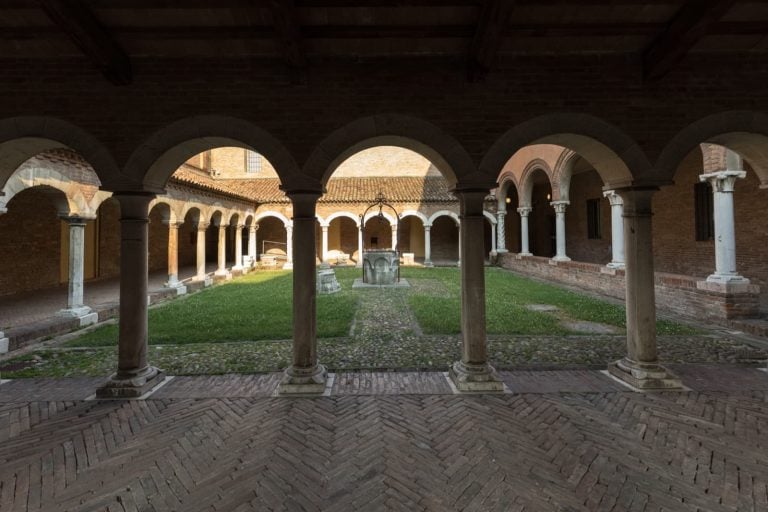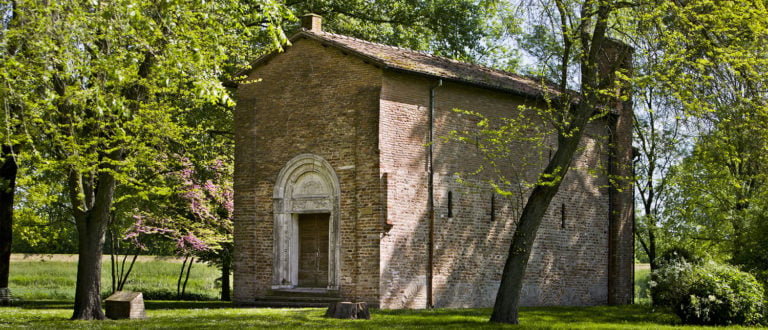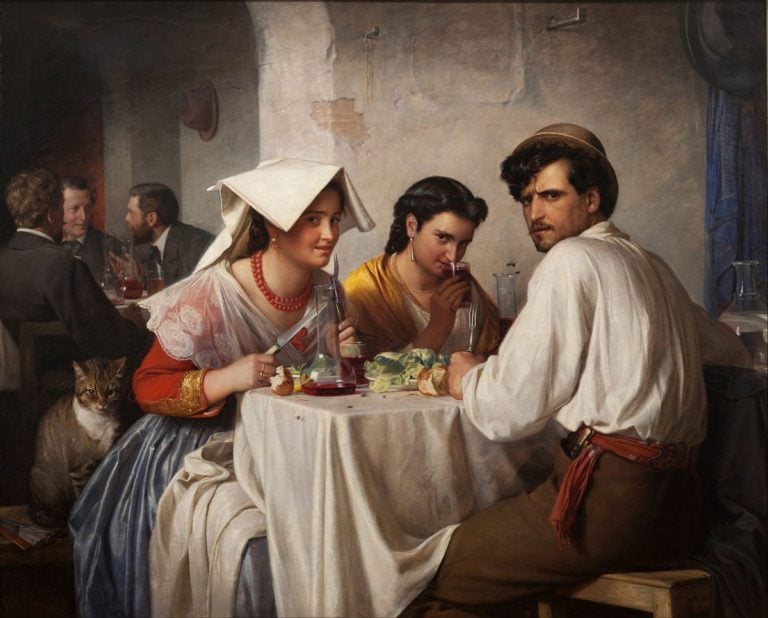Are you looking for a break from everyday life and want to discover unique places with a curious history?
Here are 6 places to visit in Emilia-Romagna to discover their traditions and unearth some of the most interesting anecdotes of regional history.
Eels Pickling Factory (Comacchio, Ferrara)
Known as “Little Venice”, Comacchio (in the province of Ferrara) is a lagoon town in Emilia-Romagna, not far from the Po Delta, within the Natural Park of the same name.
From its glorious past, the town still preserves architectures and buildings of great value, such as the 17th century Trepponti complex, symbol of the town, the 18th century Ospedale degli Infermi, now the Museo Delta Antico, and the picturesque Loggiato dei Cappuccini.
Comacchio (FE) | Credit: FooTToo, via Shutterstock
Comacchio, Ospedale degli Infermi
Comacchio, Trepponti Ph. Vanni Lazzari
Comacchio | Ph. Vanni Lazzari
One of the most characteristic places in Comacchio is undoubtedly the Manifattura dei Marinati, a factory-museum where it is still possible to see the entire processing cycle of the eels and aquadelle caught in the Comacchio valleys.
This place represents an important part of the history of Comacchio, since fishing and eel processing have always been one of the main economic activities of the local population. Today the marinated eel is a Slow Food Presidium.
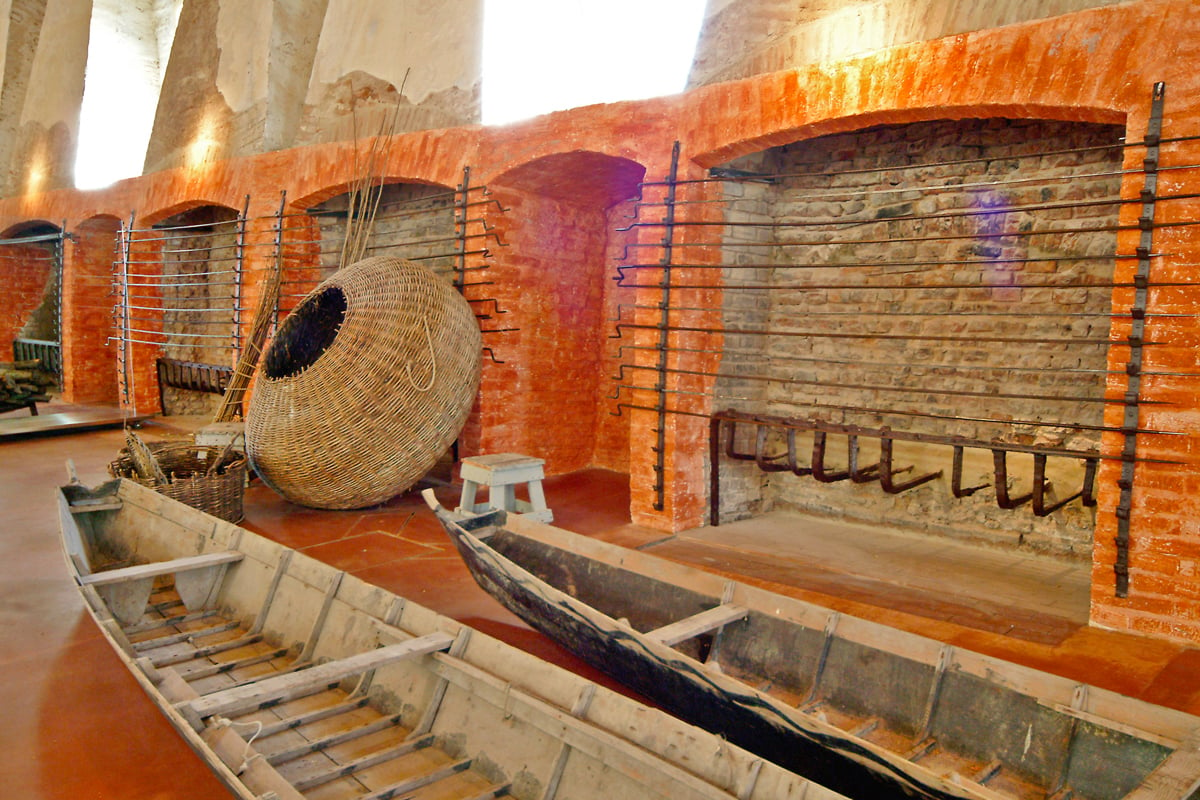
If you are fascinated by the stories and gestures of this place and would like to know more about the bond between the people of Comacchio and the products of its waters, you can hire a bicycle from the Manifattura dei Marinati and set off in the direction of Valle Fattibello and Stazione Foce.
The latter is the starting point for excursions by motorboat to discover old fishing huts, restored and furnished as they once were, and an ancient “lavoriero”, a V-shaped artefact made of poles and grids used to catch eels.
Cagliostro's Prison (San Leo, Rimini)
Founded in the 4th century by Saint Leone, San Leo is a fortified village perched on a spur in the heart of Montefeltro, a borderland between Romagna, Marche and the Republic of San Marino.
Throughout history this area has been the scene of disputes, particularly between the Malatesta family of Rimini and the Montefeltro family of Urbino in the 13th and 14th centuries.
Perhaps it is because of its impassable and impregnable character, or perhaps it is because of the peace and tranquillity that can be enjoyed while strolling through its alleys, but there is no doubt that the village of San Leo has a timeless charm that has earned it the title of the one of the Most Beautiful Villages in Italy and the Italian Touring Club’s Orange Flag recognition.
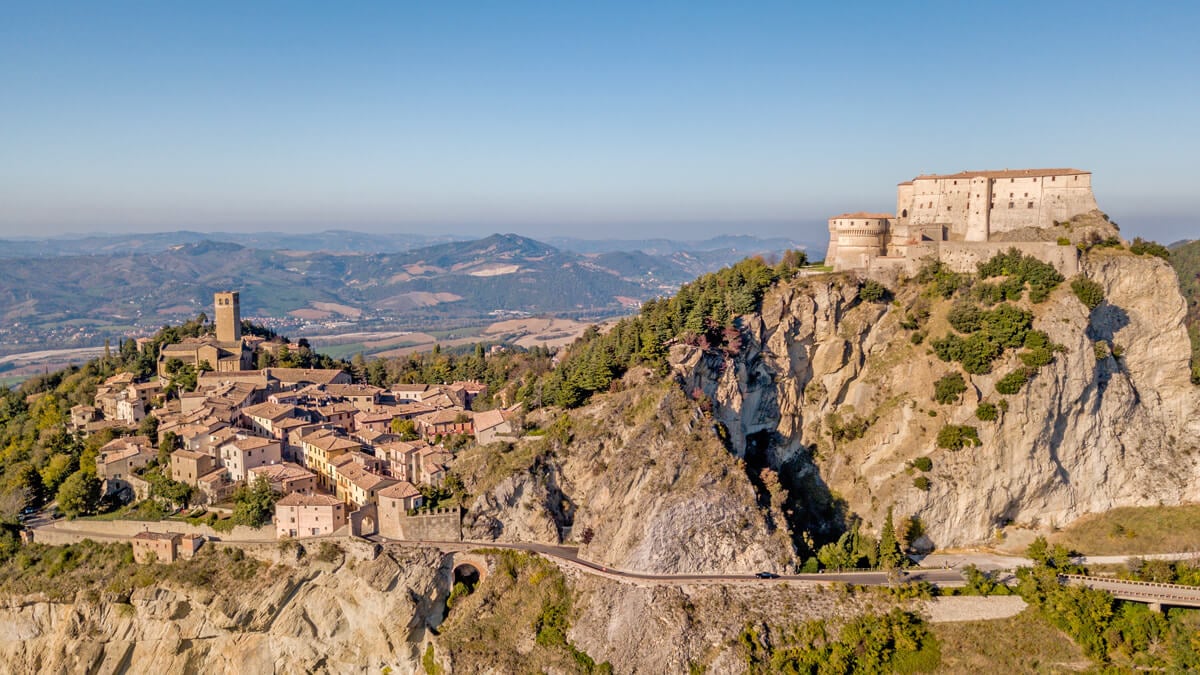
Don’t miss the ancient parish church of Santa Maria Assunta, built in Carolingian times and modernised in the Romanesque period, and the nearby cathedral, dedicated to the cult of Saint Leone.
The most striking building, however, is the imposing fortress that stands on the highest point of the rocky spur, dominating the town and the surrounding countryside.
This place could tell many stories, the most curious of which is that of Count Cagliostro, an Italian adventurer and alchemist who lived in the 18th century and was imprisoned and died in this very fortress.
After an eventful life of fraud, deceit and scandal, Cagliostro was condemned by the Catholic Church to life imprisonment for heresy.
From 1791 until his death in 1795, he was imprisoned in San Leo in a tiny cell called Pozzetto (little well) because it had no door (the prisoner was lowered through a trapdoor in the ceiling).
The room, measuring only 10 square metres, had a single window, no wider than a slit, with a triple set of bars from which one could see the two religious buildings in the village and barely a patch of sky.
Today, visitors can enter Cagliostro’s cell, a cramped, damp and terribly desolate place on whose walls the prisoner painted images – sometimes pious, sometimes blasphemous – according to the different moods that gripped him.
Village of Murals (Dozza, Bologna)
The medieval village of Dozza is located in the hinterland of Bologna, surrounded by vineyards and gentle slopes, on a hill overlooking the valley of the Sellustra river, not far from Imola and the Via Emilia.
Owned by Caterina Sforza, also known as the “Lady of Romagna”, Dozza is one of the Most Beautiful Villages in Italy and is home to the Regional Wine Cellar in the basements of the Rocca Sforzesca.
Dozza is best known for the paintings that decorate the walls of its houses, streets and squares. There are over 100 of them all over the town, painted over the years by the Biennale del Muro Dipinto.
Dozza (BO) Ph. Vivida Photo PC via shutterstock (solo per uso editoriale)
Dozza (BO) Ph. Vivida Photo PC, via Shutterstock (solo per uso editoriale)
Dozza (BO) Ph. Vivida Photo PC, via Shutterstock (solo per uso editoriale)
Walking through the narrow streets of Dozza means passing through the artistic visions of internationally renowned painters who have participated in the event from the 1960s to the present day.
It is a succession of real-life scenes, dreamy perspectives and illustrated figures, some of which seem ready to talk to you, others seraphically asleep, protecting the village.
The tour ends with an inevitable toast in the wine bar of the Enoteca Regionale, where more than 1,000 labels of Emilia-Romagna wines, selected by a special tasting commission, are collected.
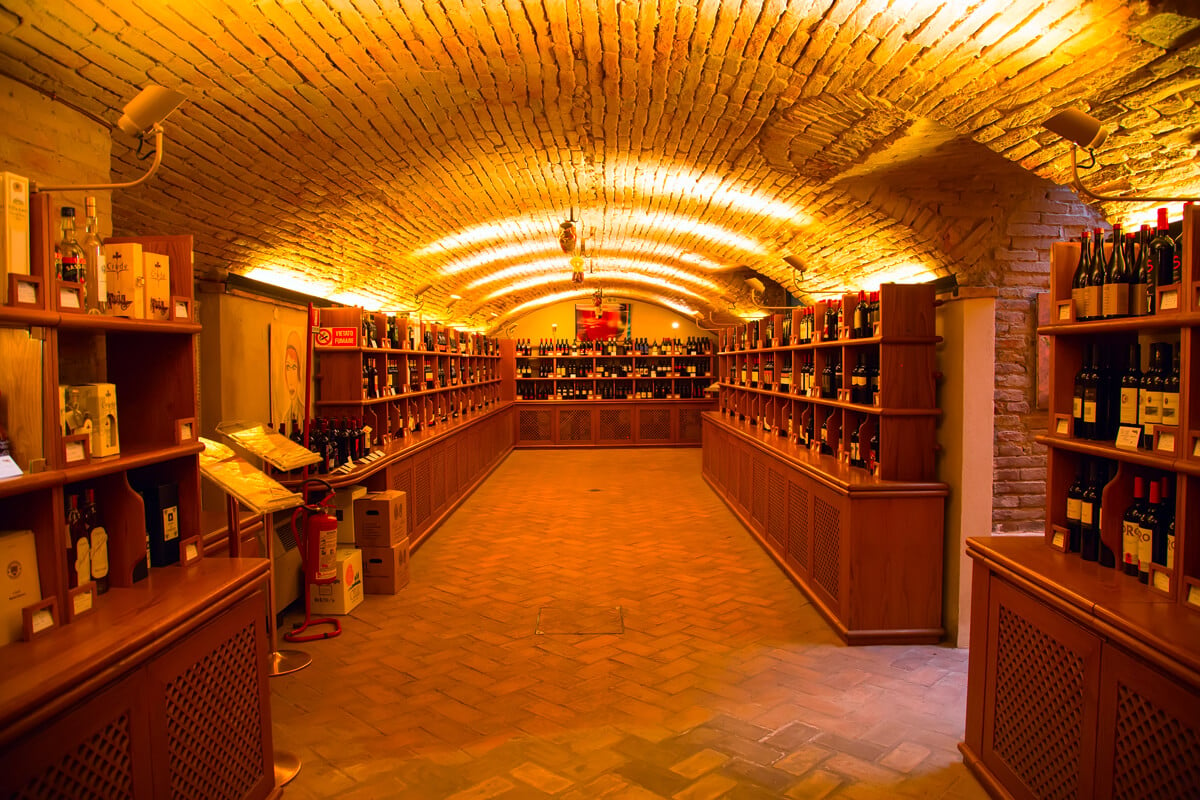
Rocchetta Mattei (Grizzana Morandi, Bologna)
In the Bolognese Apennines, a few kilometres from Porretta Terme, near Grizzana Morandi, there is a building whose architecture cannot fail to amaze those who come across it.
This is the Rocchetta Mattei, a castle that combines medieval and Arab-Moorish styles… a very original and atypical place for the area!
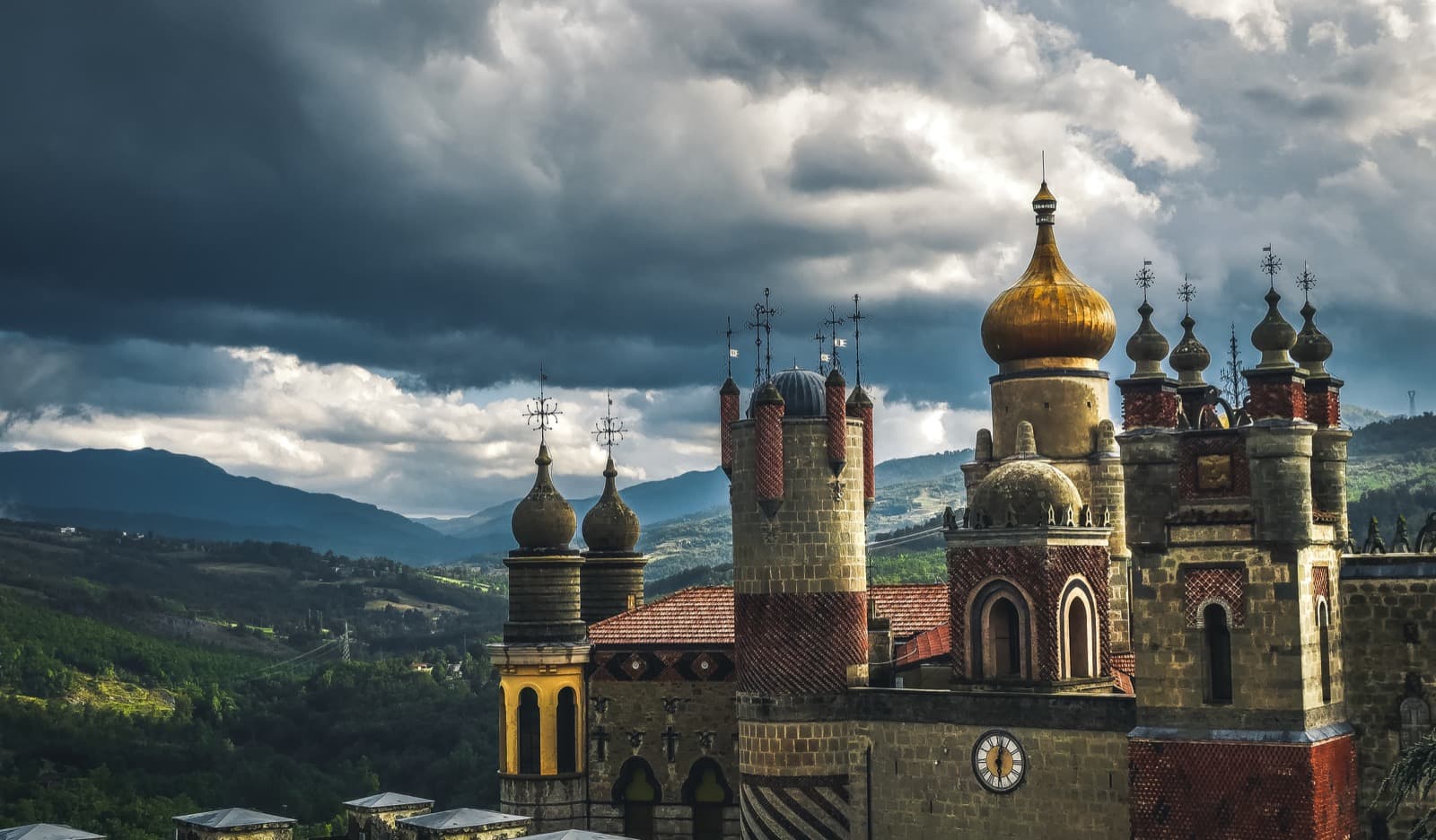
The Rocchetta was built in the second half of the 19th century on the ruins of the ancient fortress of Savignano (which probably belonged to Matilde di Canossa) at the behest of Count Cesare Mattei, a man of letters and a homeopath who was the founder of a self-proclaimed science called electrohomoeopathy – a sort of mixture of homeopathy, phytotherapy, alchemy and magnetism.
Construction of the castle began in 1850 and continued throughout the Count’s lifetime, as he lived there and accommodated his patients.
Over the years, the structure of the castle has undergone several modifications, turning it into a veritable labyrinth of towers, staircases, halls and private rooms that recall different styles, from medieval to Moorish, from modernist to Gothic.
Among the most obvious decorative references are those to the Alhambra in Granada for the Courtyard of the Lions and to the Great Mosque of Cordoba for the chapel where the Count is buried, both of which can be visited during the fascinating guided tour.
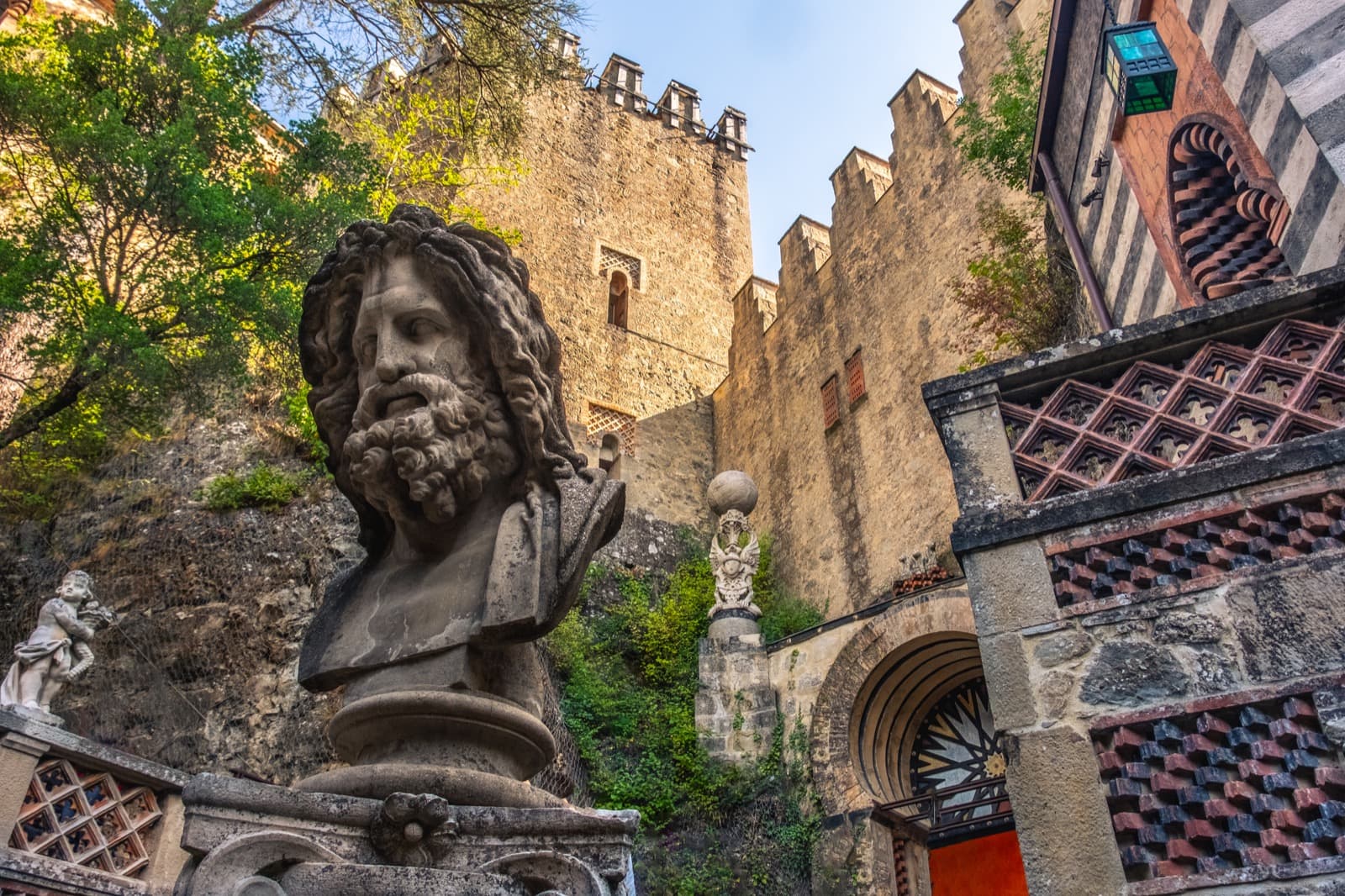
Rocchetta Mattei Ph. Luca Lorenzelli via shutterstock
Rocchetta Mattei | Ph Angelo Nastri Nacchio
Rocchetta Mattei Ph. @albertoghizzipanizza
Abbey of San Colombano (Bobbio)
Bobbio is a medieval village in the heart of the Upper Trebbia Valley, described by Hemingway as “the most beautiful valley in the world”. It is a village rich in culture and immersed in nature, so much so that it has been recognised as one of the Most Beautiful Villages in Italy and has been awarded with the Orange Flag. Iconic is the Ponte Gobbo (also known as Ponte del Diavolo, the Devil’s Bridge), which, according to legend, was built by the devil himself.
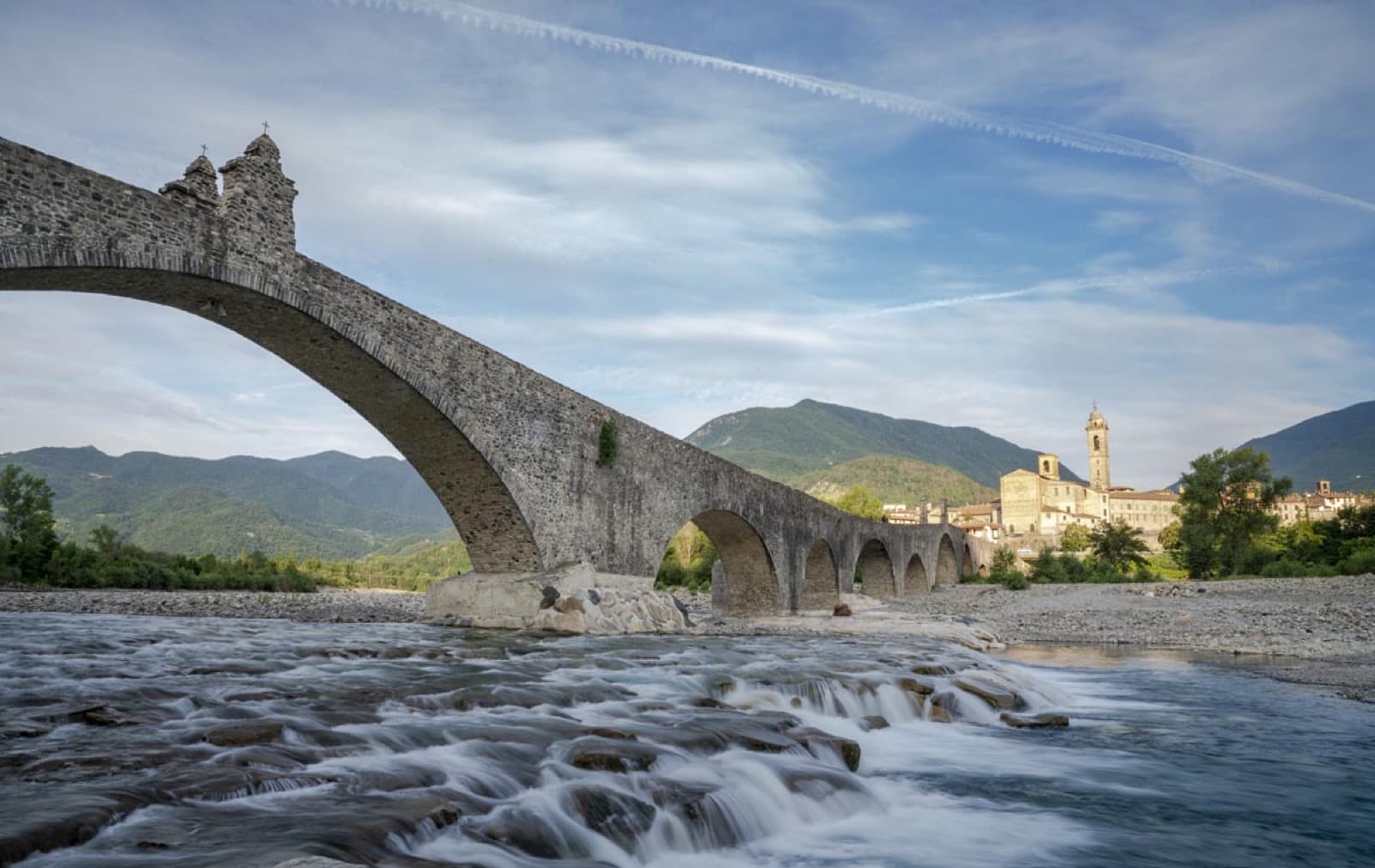
In fact, according to a famous legend, Saint Columbanus, unable to reach the village because of the flooding of the River Trebbia, was visited by the Devil himself, who offered to build him a bridge in exchange for the soul of the first person to cross it.
The saint accepted and in a single night the bridge was built with the help of eleven demons supporting as many arches. As the demons were of different sizes, the resulting bridge was not flat, but took on the ‘odd’ shape that characterises today’s ‘humpback’ bridge.
Saint Columbanus still liked the bridge, so he deceitfully kept his promise by having his own trusty bear (some say it was a dog) cross the bridge.
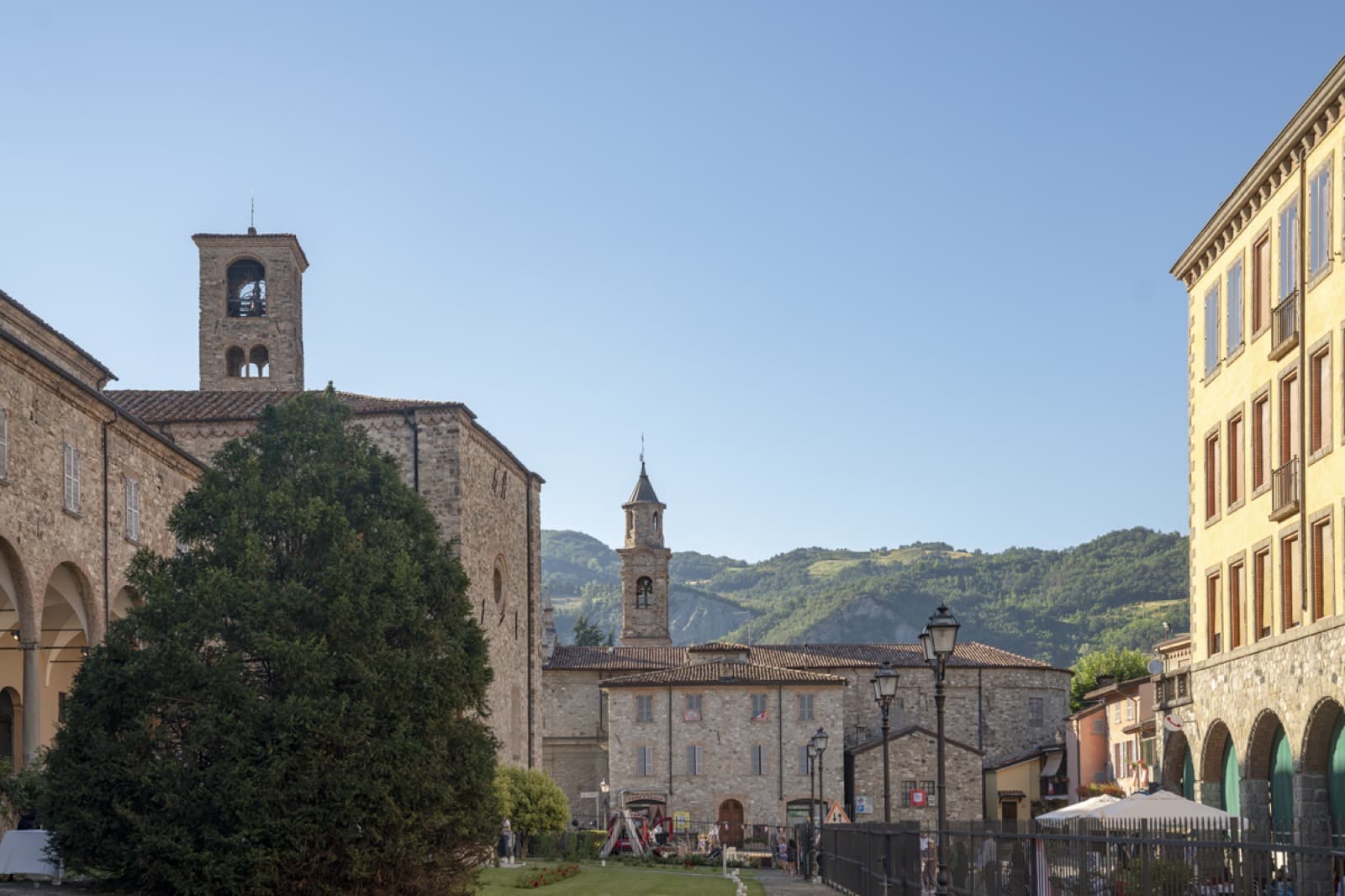
The place we have chosen to represent the uniqueness of the town of Bobbio is dedicated precisely to Saint Columbanus: it is the Abbey of San Colombano, founded by the monk himself in 614.
The abbey, one of the most important monastic centres in Europe between the 7th and 12th centuries, stands today in the historic centre of the town, which grew up over time around the monastery.
The basilica was then built between 1456 and 1522, on top of the remains of the pre-1000s convent church.
Inside, numerous frescoes decorate the two smaller naves and the transept, while near the entrance on the left is the 7th-century baptismal font that, according to legend, Queen Theodolinda gave to Saint Columbanus.
The room in front of the crypt also houses the precious floor mosaic dating back to the mid-12th century, which miraculously reappeared during the restoration works of 1910.
The crypt contains the saint’s sarcophagus. Also not to be missed is a walk around the cloister, a place rich in history.
Bobbio, Abbazia di San Colombano, esterno Ph. TheCrowdedPlanet
Bobbio, Abbazia di San Colombano, interno Ph. TheCrowdedPlanet
Bobbio, Abbazia di San Colombano, interno Ph. TheCrowdedPlanet
San Vitale Fortress (Fontanellato, Parma)
Among the Castles of the Duchy of Parma and Piacenza, the Rocca SanVitale in Fontanellato is not to be missed.
Its massive square structure, with four towers at the top and mighty crenellated walls, stands right in the heart of the town.
It is surrounded by a large moat and was originally only accessible via a drawbridge (now bricked up).
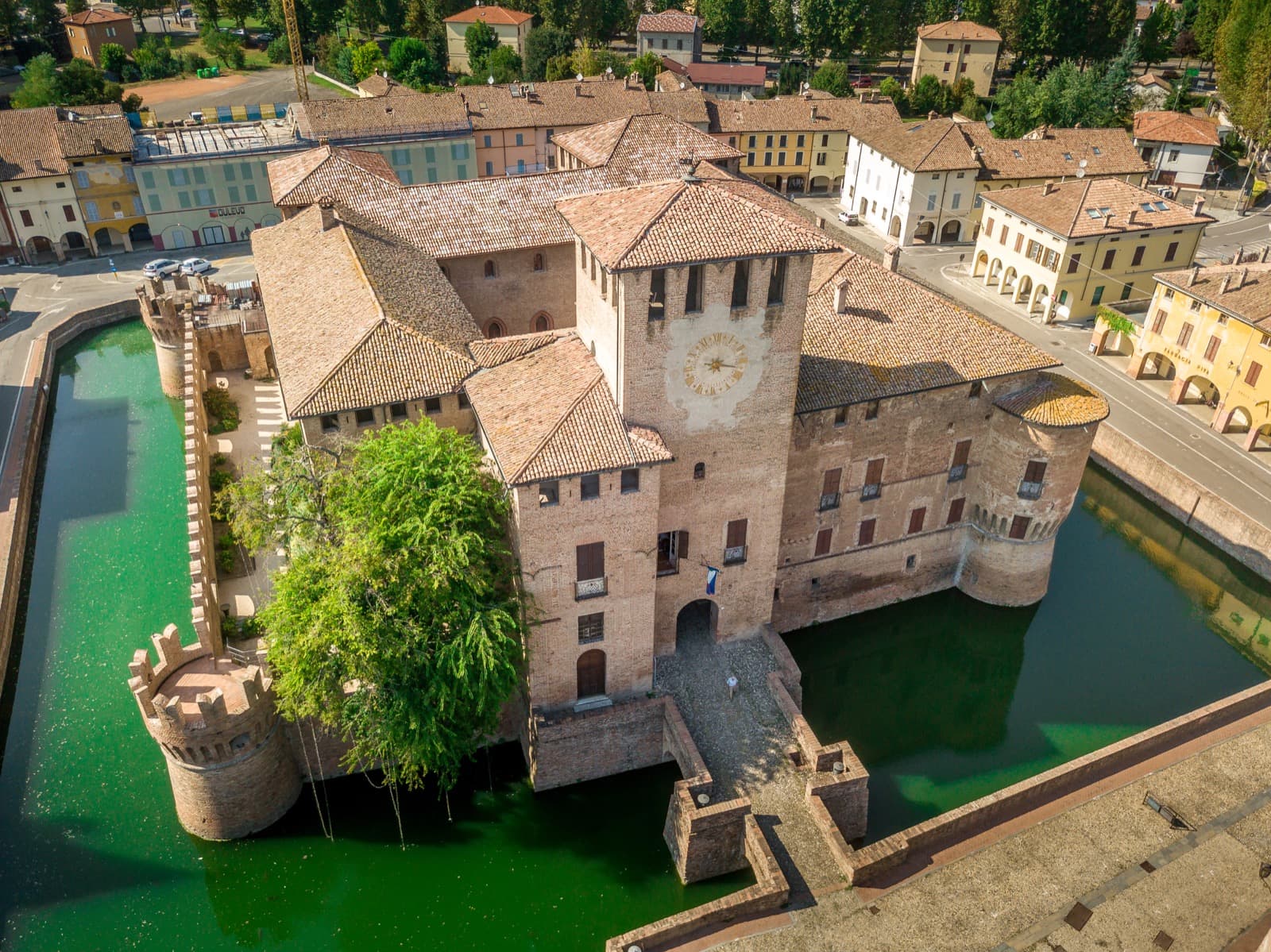
Inside, still furnished with Renaissance elements, is a masterpiece of Italian Mannerism: the small room painted by Parmigianino in 1524, depicting the myth of Diana and Actaeon from Ovid’s Metamorphoses.
But the most curious room in the castle is the nineteenth-century Camera ottica, the only one still in use in Italy, which, thanks to an ingenious system of lenses and prisms, reflects the image of the square in front of it on a screen, allowing visitors, today as in the past, to peer secretly into the life of the square in front of the castle.
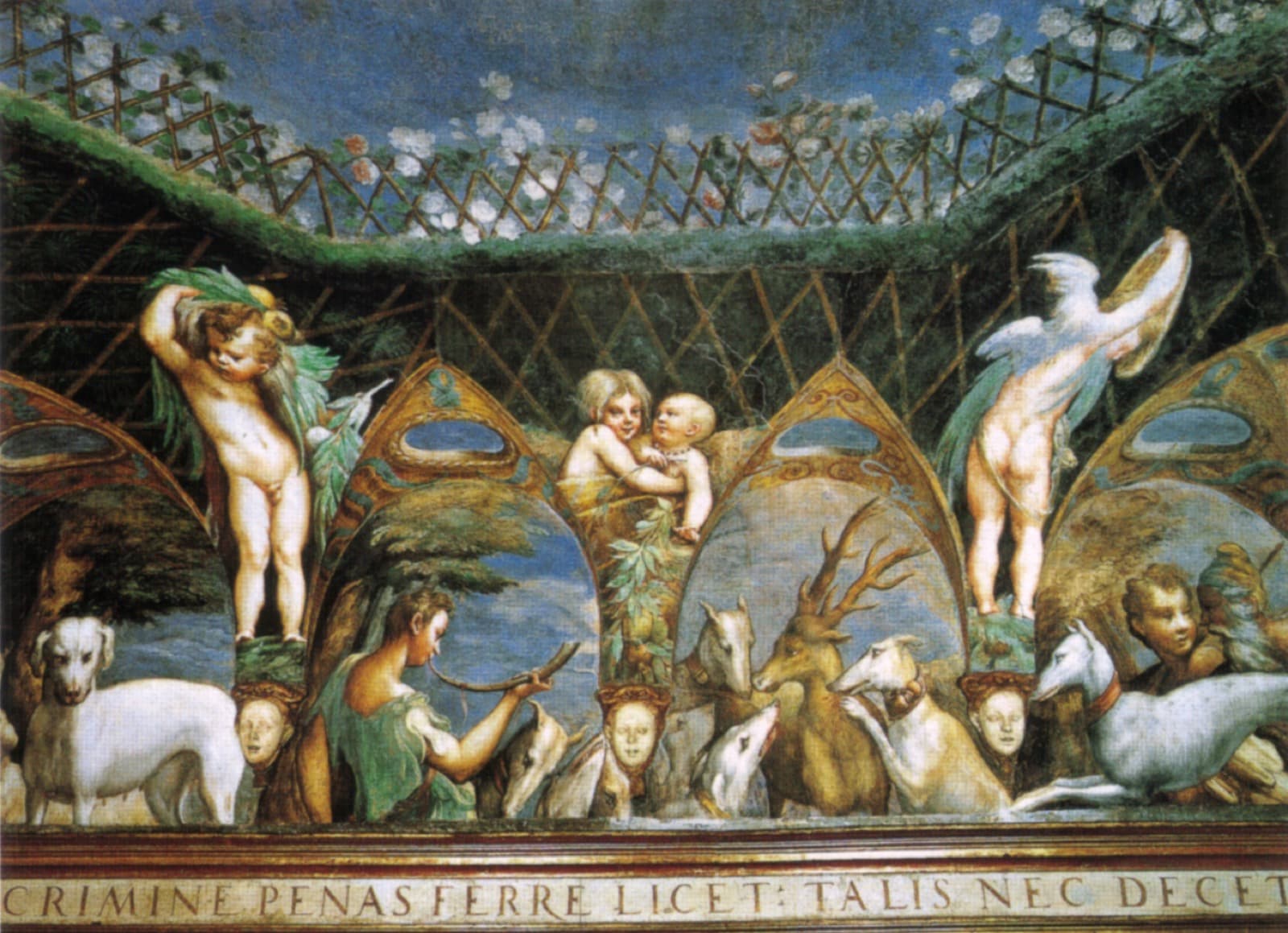
Also near Fontanellato is the Labirinto della Masone, an enormous bamboo maze created by the famous publisher and designer Franco Maria Ricci.
It is more than 3 km long, with a design inspired by the mosaics of Roman villas and baths, and the buildings at the centre of the labyrinth house Ricci’s art collection, with works from the 16th to the 20th century.
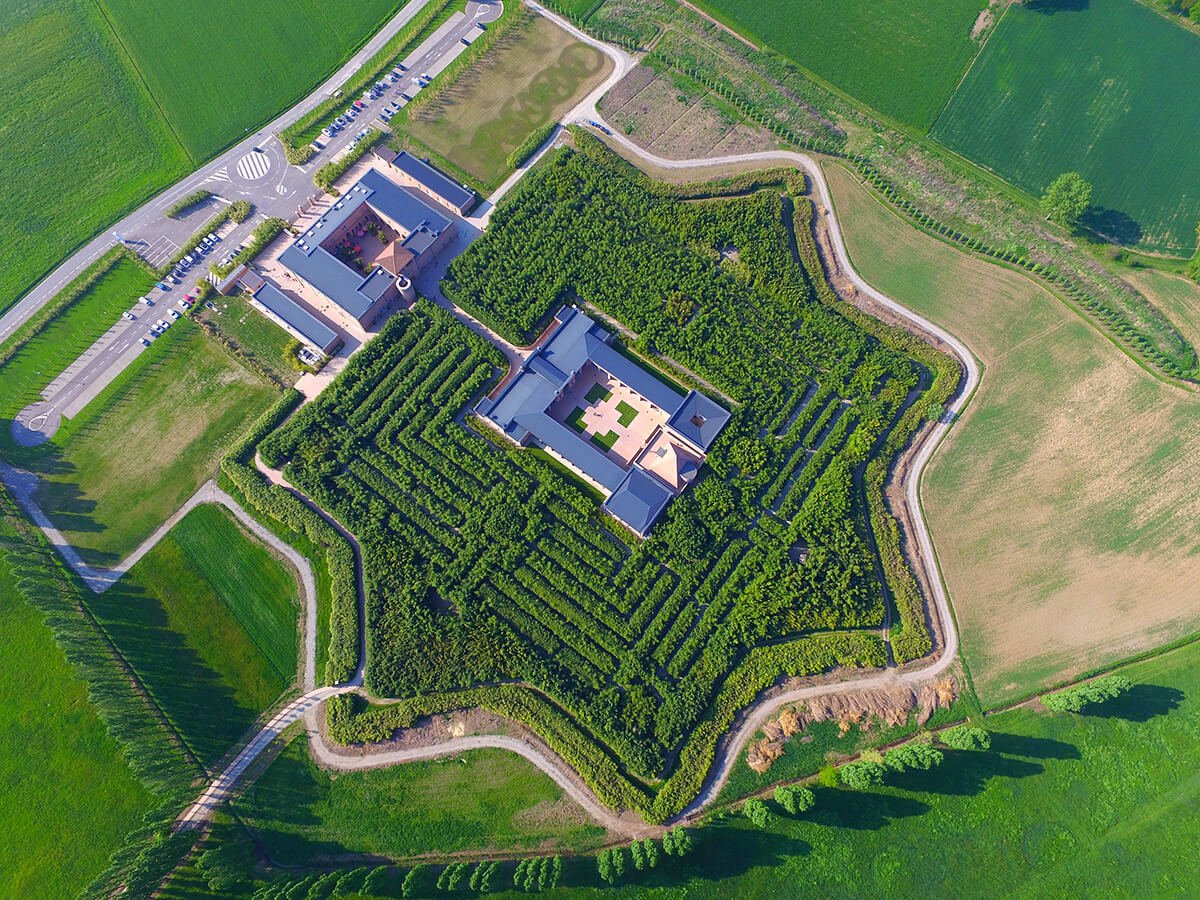
Author
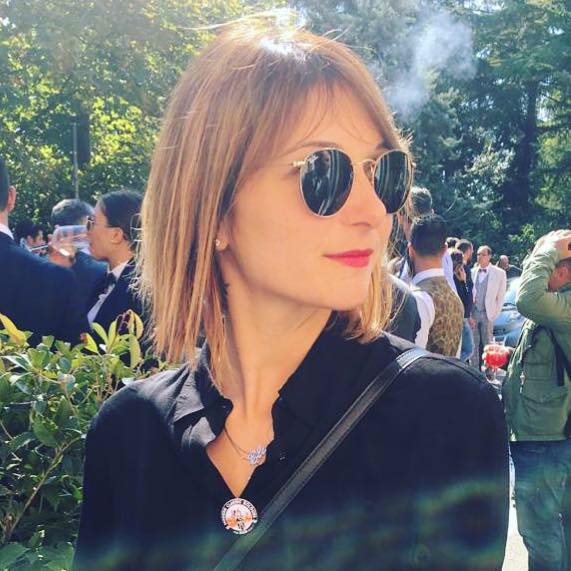
Elisa Mazzini
Social Media Manager for @inEmiliaRomagna and full-time mom.
You may also like
Get lost and find your way: Labyrinths in Emilia Romagna
by Elisa Mazzini /// April 19, 2019
Dolce Vita in Valmarecchia: an itinerary among hamlets and hills
by Elisa Mazzini /// June 7, 2016

Interested in our newsletter?
Every first of the month, an email (in Italian) with selected contents and upcoming events.
Emilia-Romagna’s most beautiful cloisters
by Davide Marino /// October 1, 2020
The most beautiful Parish Churches in Emilia-Romagna
by Davide Marino /// February 28, 2019
